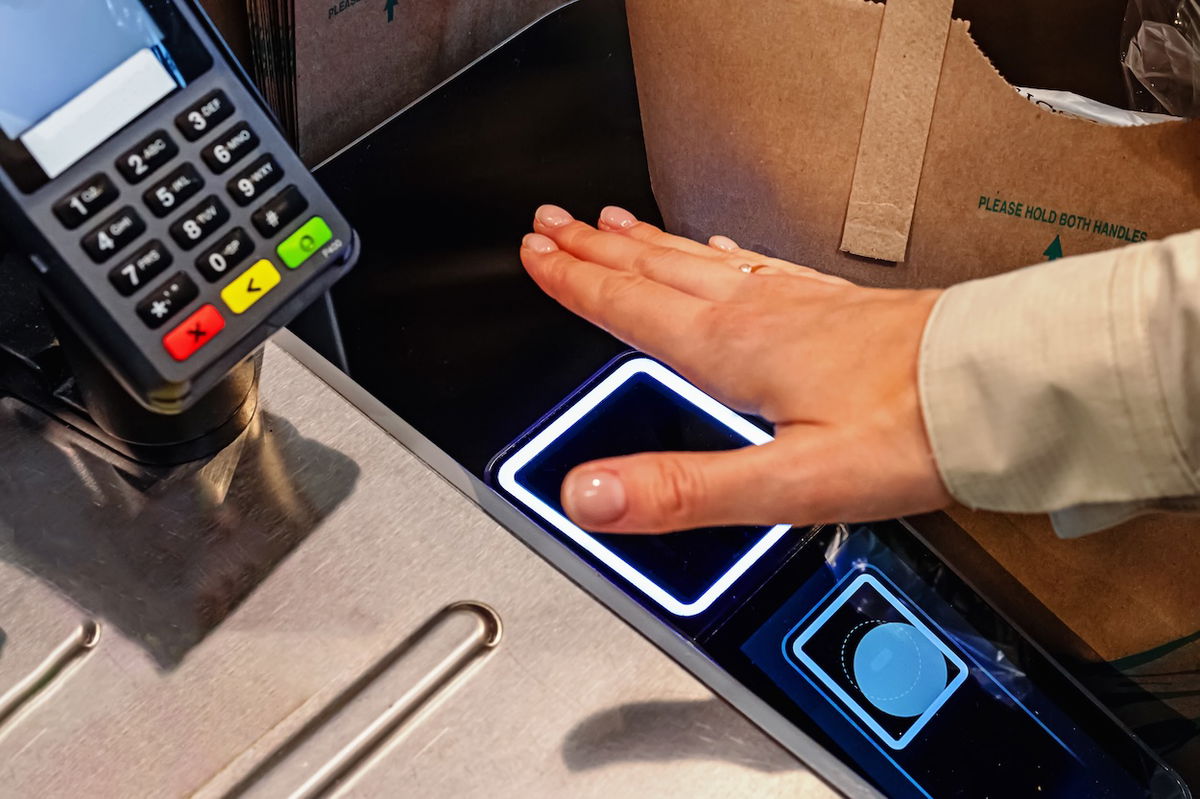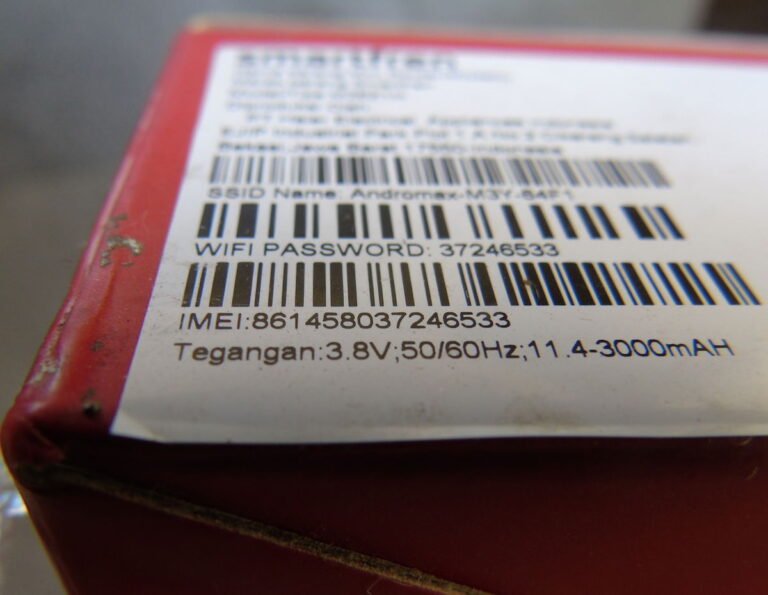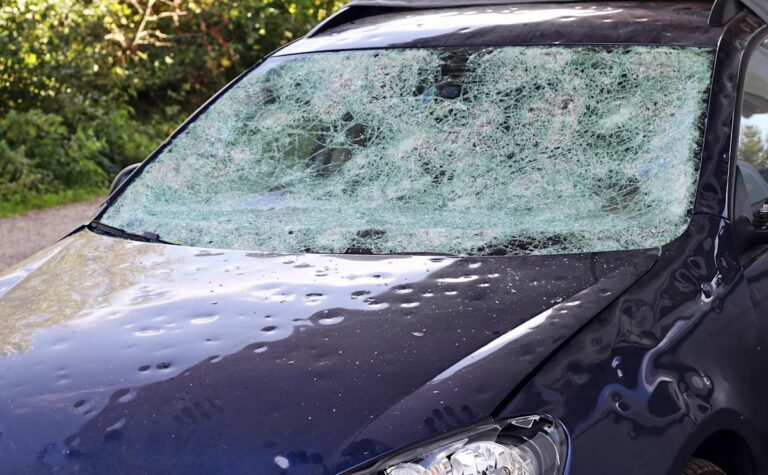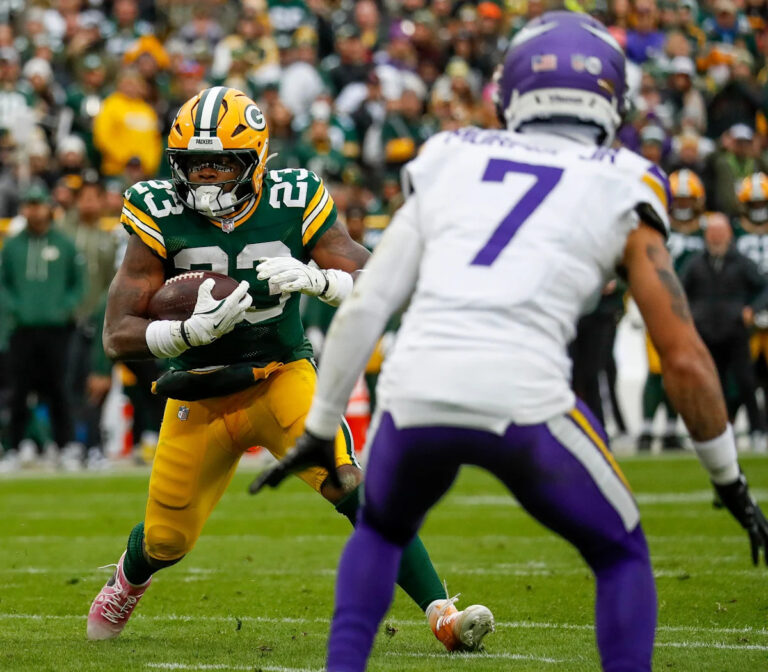
Close-up of a woman scanning her palm to make a contactless payment using Amazon One’s biometric technology. Credit: Chiociolla, Shutterstock.
Amazon has rolled out a futuristic new way to pay — using your palm. The Amazon One system scans the unique lines and veins in your hand to verify your identity and authorise payments. Already in use across Whole Foods and Amazon stores in the US, the tech is now spreading globally, including parts of Spain.
To use it, shoppers scan their palm at a special terminal and link it to their credit card. After that, a simple wave of the hand at checkout is enough to complete the payment — no card, cash, or mobile needed.
Amazon’s rivals are also getting in on the act. Tencent and Visa have launched similar palm-scan systems in China and Singapore, letting users pay by hovering their hand over a scanner.
But experts warn there are privacy concerns. Biometric data, once hacked, can’t be changed — and could become a target for cybercriminals. Still, the market is booming, with billions expected to adopt palm payment tech by 2026.
In short: paying with your hand is fast, slick, and spreading fast — but it may come with strings attached.
What is Amazon One?
Left your phone at home? Doesn’t matter. As long as you’ve brought your hand.
Welcome to the brave new world of palm payments — where your hand becomes your bank card, travel pass and ID, all rolled into one. It’s not sci-fi. It’s not a prank. It’s Amazon.
This slick, biometric payment system has already been rolled out across supermarkets and shops in the US — and now it’s waving its way across the globe to Spain.
The hand that pays the bill
Amazon One works by scanning the unique lines, ridges and veins in your palm — yes, inside your hand. Once you’ve registered, you simply hover your mitt over the scanner and voilà: payment complete. No fumbling for your wallet, no Face ID fails, no “card declined” stumbles. Just scan and go.
To sign up, users insert their credit card, scan their palm (or both palms if you’re feeling fancy), and link their Amazon account. From that moment, your palm becomes your pass to pay.
As Amazon puts it, it’s “fast, convenient, and contactless” — ideal in a post-COVID world obsessed with hygiene and efficiency.
‘The process is quick and doesn’t involve any physical contact. Customers simply hold their palm over the Amazon One device,’ the company explained on its official site.
The tech is already up and running in hundreds of US Whole Foods stores, Amazon Go shops and even at some airports and stadiums. Now it’s rolling out in parts of Spain — so don’t be surprised if you’re soon waving to pay for your paella.
Unlike passwords, you can’t change your hand: The hidden risk of biometric ID
But here’s the catch — and it’s a big one. While palm payments may be clean and convenient, they also raise hairy questions about privacy and surveillance.
In other words — once your palmprint is in the cloud, who exactly has access to it? And what happens if it gets hacked?
Amazon insists your data is safe, stored in encrypted form in a secure cloud. But critics argue that once a biometric ID is stolen, it can’t exactly be changed. You can’t reset your hand like a password.
Why does Amazon want your palm at the doctor’s office?
It’s not just supermarkets and stadiums — Amazon One is now scanning hands at hospitals too. Patients checking in at clinics like NYU Langone in the US can skip the receptionist and wave their palm instead. It sounds convenient — until you realise the company that once sold you books now wants a piece of your biometric ID and knows where your next cardiology appointment is. Amazon says your health data is kept separate, and your palm scan is protected. But critics warn the bigger risk is metadata: time, location, and behaviour signals that could quietly feed into Amazon’s empire of shopping habits, adverts, and algorithms. As tech analyst Calli Schroeder put it, Amazon’s biometric reach is “incredibly revealing” — and potentially far too powerful. When the world’s biggest retailer also runs your pharmacy, grocery store, media service and cloud infrastructure, you’ve got to ask: how many parts of your life should one company scan, store, and silently sync?
The billion-handshake economy
Despite the risks, palm payments are picking up steam. According to Goode Intelligence, over 3 billion people could be using biometric payments by 2026, in a market worth $5.8 trillion. That’s not pocket change — that’s an economic revolution.
Mastercard, J.P. Morgan and other big names are now racing to roll out their own palm-based payment systems, betting big on a future without physical wallets.
So next time you’re in a queue fumbling for a card, remember: your future bank card might be closer than you think. As in… attached to your wrist.
Palm payments in Spain: What we know so far
Despite the global buzz around biometric payments, Spain hasn’t launched palm payment systems like Amazon One — yet. What we’re seeing instead is groundwork being laid for a 2026 rollout, with pilot schemes expected to appear soon.
Supermarkets and retail chains are the likely testing grounds in Spain— but don’t be surprised if it pops up in metro stations and airports soon after.
These trials won’t be limited to palm scans. The focus is broader: fingerprints, facial recognition, iris scans — all aimed at eliminating the need for cards, cash, or even smartphones. It’s all about instant identity, frictionless payment, and reducing reliance on internet connectivity.
That said, Amazon’s palm-scan tech hasn’t landed here officially. It’s live in the US and expanding fast, but Spain is still watching from the sidelines. No confirmed dates, no specific cities. Just a clear trajectory: biometric payments are coming, and when they do, the rollout will likely be quiet, fast, and widespread.
Bottom line? Spain’s high street might not be scanning your hand today — but within 18 months…
Convenient? Yes. Clever? Absolutely. Creepy? Just a tad.
But whether you love it or loathe it — the future’s not coming. It’s waving. Hands up if you’re ready.
Stay tuned to the Euro Weekly News for more Spanish living.
More Spanish news in English.







